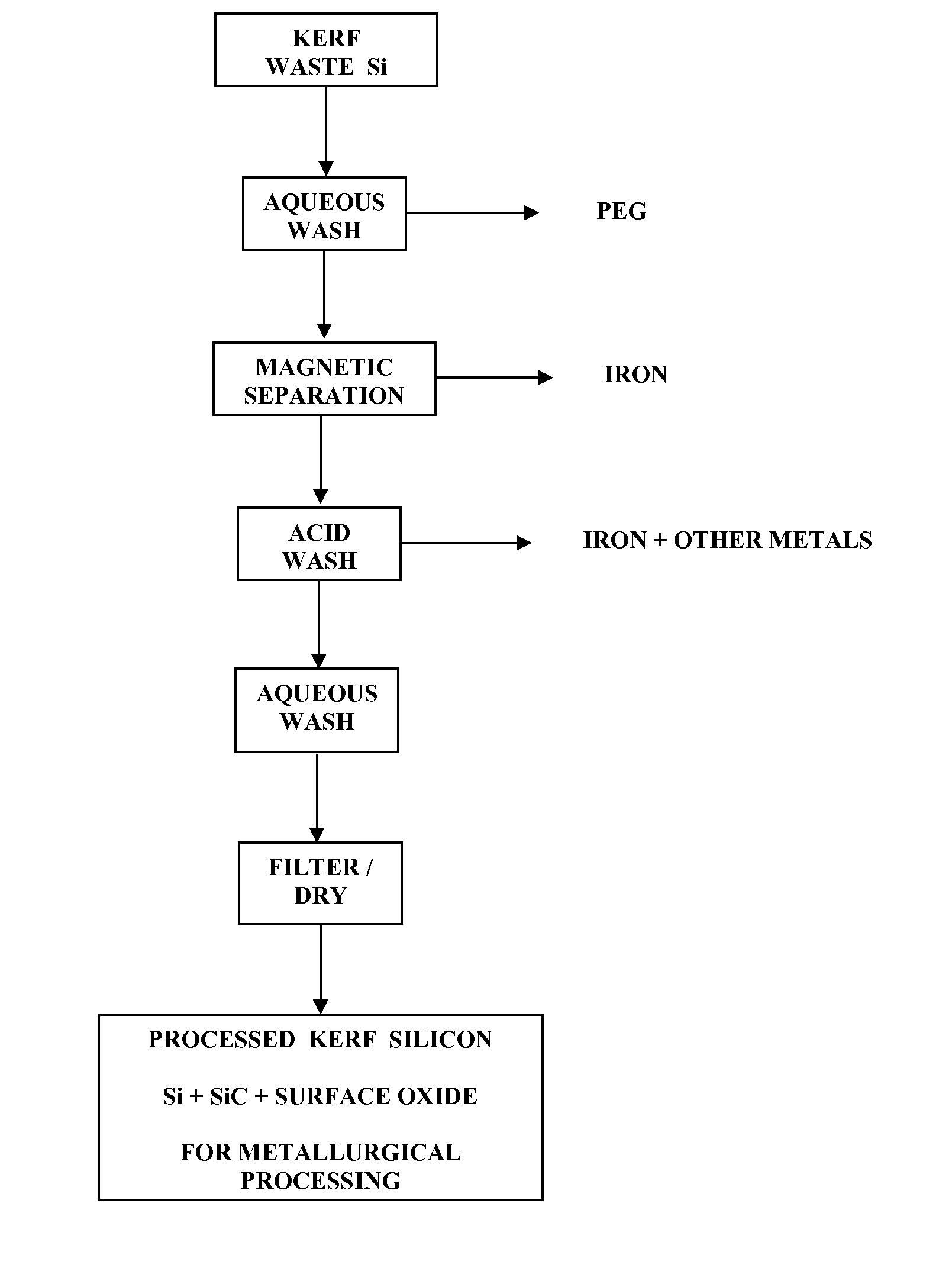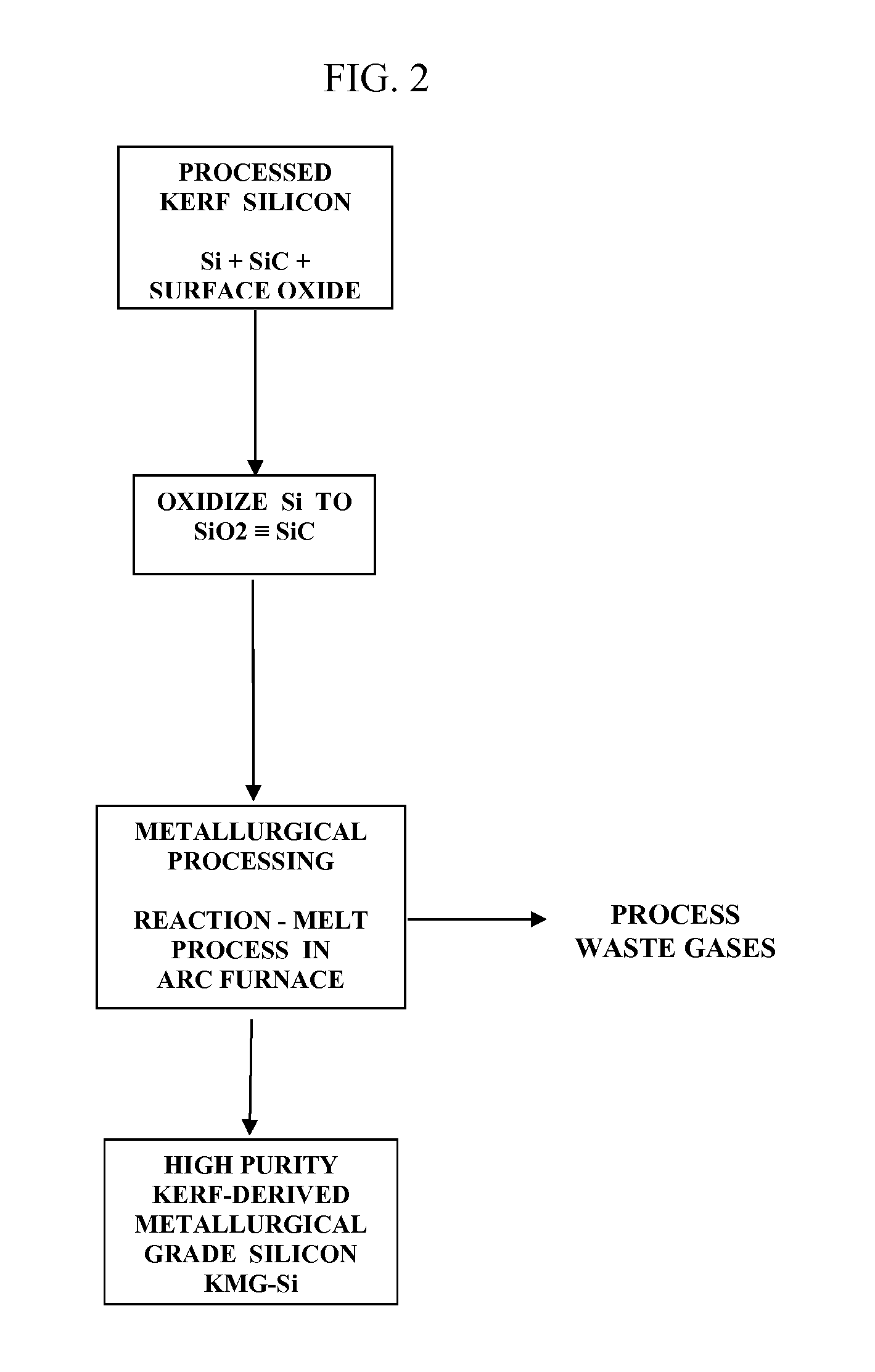Recovery of silicon value from kerf silicon waste
a technology of kerf silicon and waste, which is applied in the field of recovery of silicon value, can solve the problems of kerf silicon waste, high energy consumption of process, and significant silicon waste of wire saw process, and achieve the effect of high purity of kerf silicon
- Summary
- Abstract
- Description
- Claims
- Application Information
AI Technical Summary
Benefits of technology
Problems solved by technology
Method used
Image
Examples
example 1
Pretreatment of Kerf Silicon
[0088]Kerf silicon typically contains 50-60% Si, 25-30% SiC, 5-10% oxidized Si, 4-5% Fe, approximately 0.1% Cu and Zn and traces of other metallic impurities added from the slurry recovery and kerf silicon separation processes. Typical levels of impurities in kerf Si are: Fe˜4-5%, Al 250-300 ppm, Ca 500-700 ppm, Ti 5-100 ppm,
[0089]Mn 100-200 ppm, Na 0.1%, Cu ˜0.2%, Zn ˜0.1%, traces of alkali metals.
[0090]B<2 ppm, P ˜0 ppm. Almost all of these impurities are extrinsic to the silicon, since the latter was derived from crystal grown ingots. As such, the levels of these impurities can be controlled and reduced by proper care in the slurry recovery and kerf separation processes. They can also be removed by appropriate pretreatment of the kerf silicon waste.
[0091]Since these impurities are present as metals or their oxides, acid extraction is the most appropriate pretreatment process. In an example the kerf silicon was treated by leaching the impurities with a ...
PUM
| Property | Measurement | Unit |
|---|---|---|
| purity | aaaaa | aaaaa |
| abrasive | aaaaa | aaaaa |
| metallic impurities | aaaaa | aaaaa |
Abstract
Description
Claims
Application Information
 Login to View More
Login to View More - R&D
- Intellectual Property
- Life Sciences
- Materials
- Tech Scout
- Unparalleled Data Quality
- Higher Quality Content
- 60% Fewer Hallucinations
Browse by: Latest US Patents, China's latest patents, Technical Efficacy Thesaurus, Application Domain, Technology Topic, Popular Technical Reports.
© 2025 PatSnap. All rights reserved.Legal|Privacy policy|Modern Slavery Act Transparency Statement|Sitemap|About US| Contact US: help@patsnap.com



